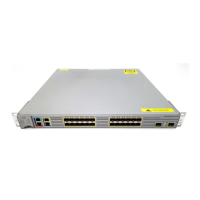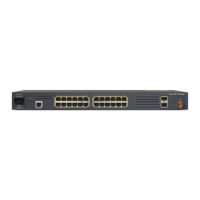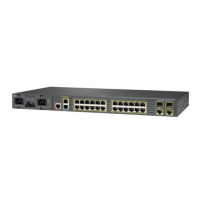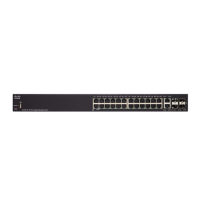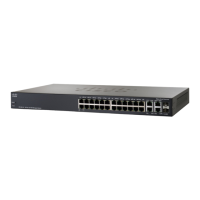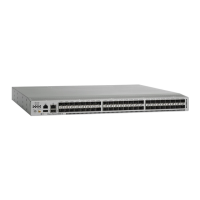33-9
Cisco ME 3800X and 3600X Switch Software Configuration Guide
OL-23400-01
Chapter 33 Configuring IP Multicast Routing
Configuring IP Multicast Routing
Multicast Routing Configuration Guidelines
• PIMv1 and PIMv2 Interoperability, page 33-9
• Auto-RP and BSR Configuration Guidelines, page 33-10
PIMv1 and PIMv2 Interoperability
The Cisco PIMv2 implementation provides interoperability and transition between Version 1 and
Version 2, although there might be some minor problems.
You can upgrade to PIMv2 incrementally. PIM Versions 1 and 2 can be configured on different routers
and multilayer switches within one network. Internally, all routers and multilayer switches on a shared
media network must run the same PIM version. Therefore, if a PIMv2 device detects a PIMv1 device,
the Version 2 device downgrades itself to Version 1 until all Version 1 devices have been shut down or
upgraded.
PIMv2 uses the BSR to discover and announce RP-set information for each group prefix to all the routers
and multilayer switches in a PIM domain. PIMv1, together with the Auto-RP feature, can perform the
same tasks as the PIMv2 BSR. However, Auto-RP is a standalone protocol, separate from PIMv1, and is
a proprietary Cisco protocol. PIMv2 is a standards track protocol in the IETF. We recommend that you
use PIMv2. The BSR mechanism interoperates with Auto-RP on Cisco routers and multilayer switches.
For more information, see the “Auto-RP and BSR Configuration Guidelines” section on page 33-10.
When PIMv2 devices interoperate with PIMv1 devices, Auto-RP should have already been deployed. A
PIMv2 BSR that is also an Auto-RP mapping agent automatically advertises the RP elected by Auto-RP.
That is, Auto-RP sets its single RP on every router or multilayer switch in the group. Not all routers and
switches in the domain use the PIMv2 hash function to select multiple RPs.
Dense-mode groups in a mixed PIMv1 and PIMv2 region need no special configuration; they
automatically interoperate.
Sparse-mode groups in a mixed PIMv1 and PIMv2 region are possible because the Auto-RP feature in
PIMv1 interoperates with the PIMv2 RP feature. Although all PIMv2 devices can also use PIMv1, we
recommend that the RPs be upgraded to PIMv2. To ease the transition to PIMv2, we have these
recommendations:
• Use Auto-RP throughout the region.
• Configure sparse-dense mode throughout the region.
If Auto-RP is not already configured in the PIMv1 regions, configure Auto-RP. For more information,
see the “Configuring Auto-RP” section on page 33-23.
Candidate BSRs Disabled.
Candidate RPs Disabled.
Shortest-path tree threshold rate 0 kbps.
PIM router query message interval 30 seconds.
Table 33-2 Default Multicast Routing Configuration (continued)
Feature Default Setting
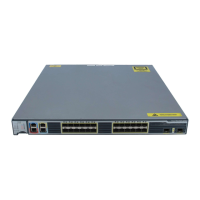
